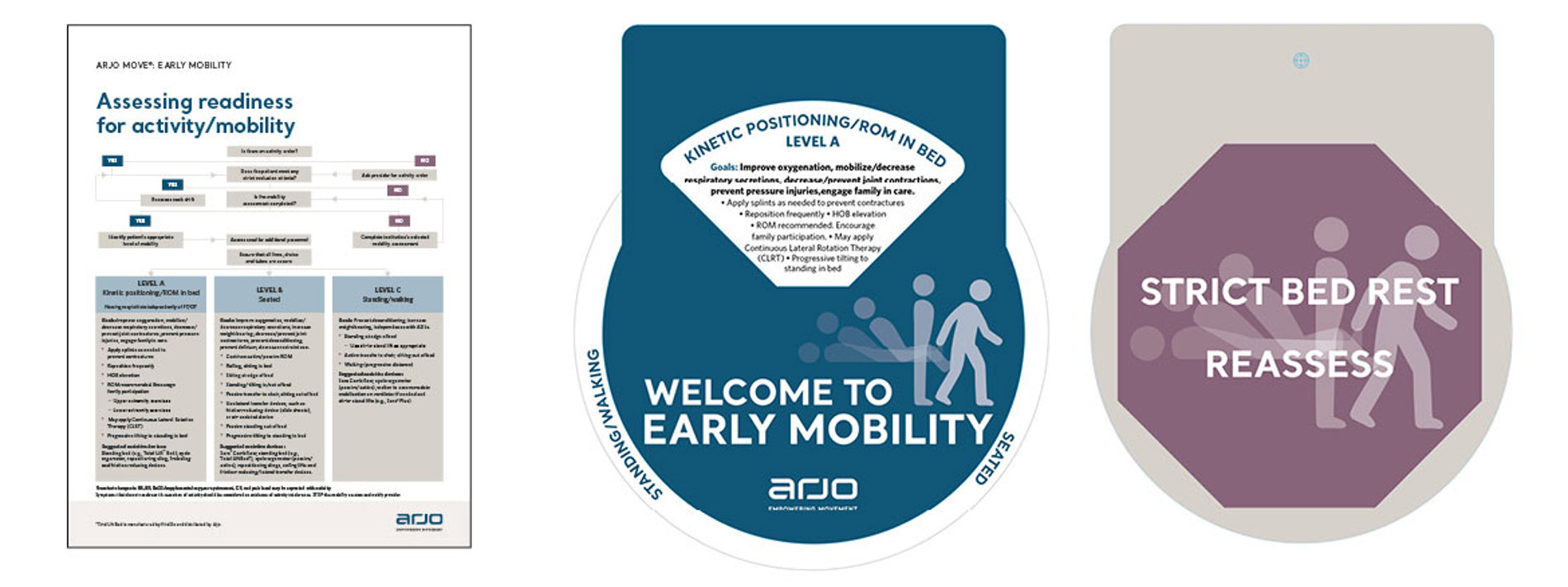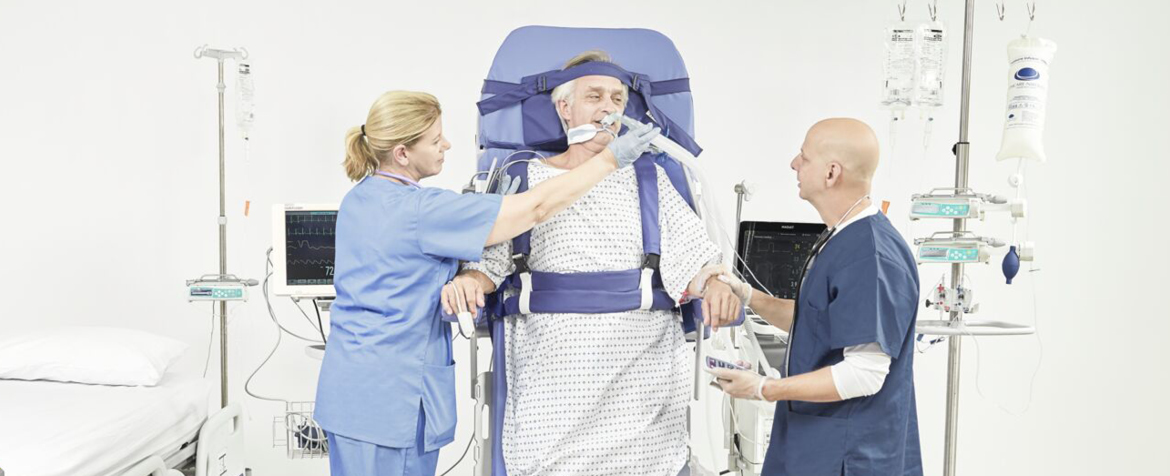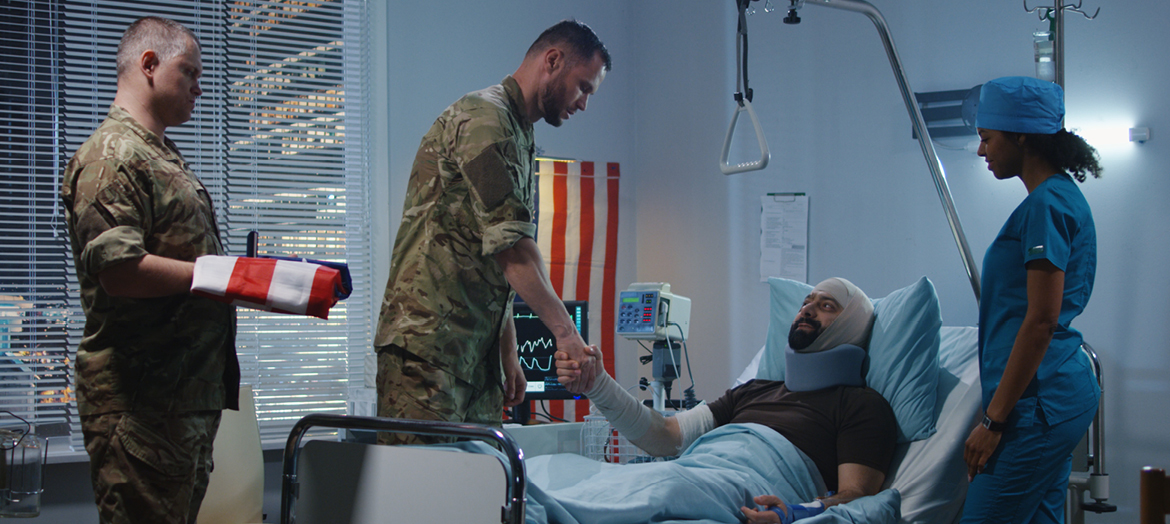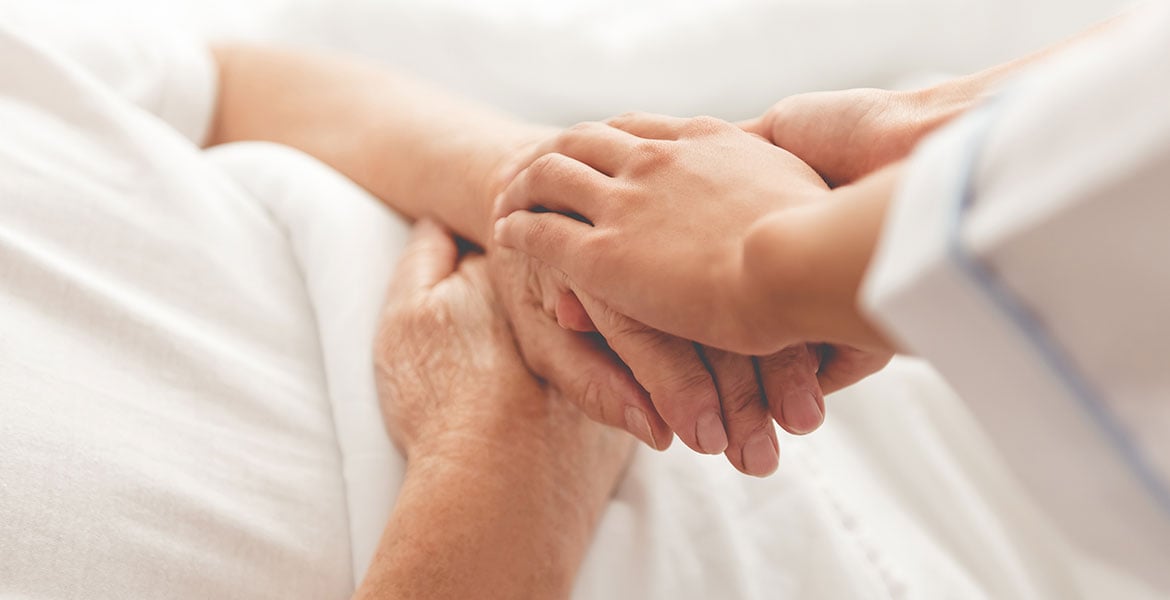The impact of prolonged immobility & assessment of patient readiness for mobility
Intensive care unit (ICU) patients frequently have extreme derangement of physiological function.

The impact of prolonged immobility
There is an initial focus on aggressive life support, coupled with continuous monitoring and treatment for organ failure.1 While providing this care, ICU management of the critically ill patient has traditionally involved supine or semi-recumbent positioning and bed rest, mechanical ventilation, analgesia, and sedation, but with historically little attention placed on long-term outcomes and in particular neuromuscular function.
![]()
Muscle wasting occurs early and rapidly during the first week of critical illness, with losses of up to 20% seen for those in multiorgan failure2
![]()
A strong correlation between muscular weakness and poor outcomes has been observed, with weakness directly associated with failure to wean from mechanical ventilation and increased in-hospital mortality rates3,4
![]()
ICU survivors frequently suffer severe functional impairments and reduced pace and degree of recovery.5 These effects can last months to years after hospital discharge,6 with a negative impact on employment and income in ICU survivors and their caregivers, and mortality and utilization of primary care services are high in the immediate post-discharge period7
Assessment of patient readiness for mobility
Starting mobilization as early as clinically possible is an important method of reducing the significant impact of critical illness immobility. To help guide decision making, expert consensus guidelines have been produced to guide in bed and out of bed mobilization.8 Ultimately, the decision to commence mobilization should be based on an assessment of cardiovascular stability and respiratory reserve.9 The arousal level should be considered, but reduced arousal is not necessarily a contraindication to rehabilitation, where supported sitting or verticalization may serve as a stimulus to aid wakening and form part of the assessment of neurological status.
The Arjo tool kit
To assist you in assessing and activating your patient 's mobility according to their clinical need, we have developed a number of tools and processes locally. See examples below:

ICU Early Mobility Solution Clinical Evidence
Early mobilization has been demonstrated to be safe and feasible for patients admitted to critical care. Implementing programs of early mobility has shown numerous benefits for both patients and healthcare organizations. It is now included as a key component in national protocols and international guidelines10-12.
Download our ICU early mobilization clinical evidence summary. You will learn about:
- Key body systems impacted by immobility in critically ill patients
- The benefits of and barriers to early mobilization
- Assessment of patient readiness for mobility
- Methods and solutions from in-bed to out-of-bed mobilization
Meet with Our Experts
Embracing early mobility as a fundamental pillar of rehabilitation for US veterans is an opportunity to optimize their recovery journey and enhance their overall well-being. To benefit from our Early Mobility Solution and provide the best care for our veterans, book a demonstration of our Early Mobility solutions with our experts. We look forward to assisting you in providing exceptional care to our esteemed veterans.
Experience our products firsthand by booking a demonstration of our Early Mobility Solutions.
References:
- Kress, JP. Clinical trials of early mobilization of critically ill patients. Critical Care Medicine. 2009; 37[Suppl.]:S442–S447.
- Puthacheary Z, Rawal J, Mcphail M, et al. Acute skeletal muscle wasting in critical illness. J Am Med Assoc. 2013;310:1591–600
- De Jonghe B, Bastuji-Garin S, Durand MC, et al. Respiratory Weakness Is Associated With Limb Weakness and Delayed Weaning in Critical Illness. Critical Care Medicine 2007;35:2007-2015
- Garnacho-Montero J, Amaya-Villar R, Garcia-Garmendia JL, et al. Effect of Critical Illness Polyneuropathy on the Withdrawal From Mechanical Ventilation and the Length of Stay in Septic Patients. Critical Care Med 2005;33:349-354
- Griffiths RD, Hall JB. Intensive care unit-acquired weakness. Crit Care Med 2010; 38: 779–787
- Herridge MS, Tansey CM, Matte A, et al. Functional disability 5 years after acute respiratory distress syndrome. N Eng J Med. 2011;364(14):1293–304
- Griffiths J, Hatch RA, Bishop J, et al. An exploration of social and economic outcome and associated health related quality of life after critical illness in general intensive care unit survivors: a 12-month follow-up study. Crit Care. 2013;17(3):R100.
- Hodgson CL, Stiller K, Needham DM, et al. Expert consensus and recommendations on safety criteria for active mobilisation of mechanically ventilated critically ill adults. Critical Care 2014; 18:658: 1-9
- McWilliams, D.J., Westlake, E.V., Griffiths, R.D. Weakness on the Intensive Care Unit – Current Therapies. British Journal of Intensive care. 2011 Summer edition. pp. 23-27
- National Institute for Health and Care Excellence [NICE]. (2009) Rehabilitation after critical illness. London: NICE (Nice guideline no 83)
- Baron R, Binder A, Biniek R, et al. Evidence and consensus based guideline for the management of delirium, analgesia, and sedation in intensive care medicine. (DAS- Revised Guideline 2015) - short version. Ger Med Sci. 2015 Nov 12;13:Doc19.
- Devlin JW, YOanna S, Gelinas C, et al. Clinical Practice Guidelines for the Prevention and Management of Pain, Agitation/Sedation, Delirium, Immobility, and Sleep Disruption in Adult Patients in the ICU. Critical care Medicine. 2018; 46(9)








